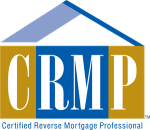 Reverse Mortgage Occupancy Requirements Explained
Reverse Mortgage Occupancy Requirements Explained
A reverse mortgage is a valuable financial tool for retirees, allowing them to borrow against the equity of their home to provide an extra cushion of income as they age. This income can be used for medical costs, home repairs, or just daily living expenses. It’s an ideal arrangement for seniors who wish to “age in place,” continuing to live in their homes for as long as possible.
But confusion exists as to reverse mortgage occupancy requirements. The mortgage comes due whenever the borrower no longer uses the home as his/her principal residence. Unfortunately, this stipulation sometimes scares away potential borrowers who might want to travel or even to spend the winter months in an alternate location.
The truth is, there is some misunderstanding about reverse mortgage occupancy requirements. A lot of misinformation exists as to the exact meaning of the term “principal residence.”
So, let’s look at some of these misunderstandings and get a clearer picture as to what exactly these occupancy requirements mean.
What is a primary residence?
The Principal Residence Requirement, as defined by HUD, states that it is your permanent place of abode in which you typically spend the majority of a calendar year. It goes on to state that you cannot have more than one principal residence at a time.
If you like to spend a few months of the year in a warmer climate, or if you simply want to travel around the country in your RV, your house can still be considered your principal residence if you typically live there for most of the calendar year.
Similarly, if you are sick or injured and must reside temporarily in a healthcare institution, this does not affect your residency as long as you are living in the home for most of the calendar year.
What do you have to do to comply with occupancy requirements?
To meet occupancy requirements, you must not leave the home for more than twelve consecutive months. This allows a certain amount of freedom to do other things for a period of time.
Each year, HUD will require you to sign an Annual Occupancy Certification, proving that the home is still your principal residence. This certification provides protection to you as well as the lender.
No matter the reason, if you do vacate your property for more than twelve consecutive months, the loan may be called due for repayment.
What is the 2-month communication rule?
The two-month communication rule is another valuable protection to reverse mortgage borrowers.
It simply means that you should notify your loan servicer if you are going to vacate your home for longer than two months.
In doing so, you can prevent any erroneous determination that your principal residence has changed.
By maintaining this important piece of communication, you make the servicer aware that, despite temporary absence, you still typically reside in the residence for the majority of the calendar year.
In this way, you avoid any appearance that you have vacated the premises due to physical illness or disability which would, based on occupancy requirements result in the lender calling for repayment.
The bottom line
Contrary to popular belief, reverse mortgage occupancy requirements should not be a deterrent to leveraging this valuable financial tool. You can enjoy the benefits of some extra income without sacrificing your freedom.








